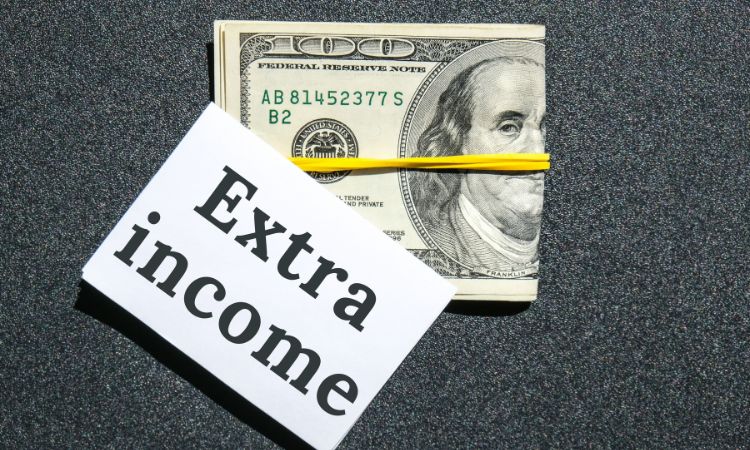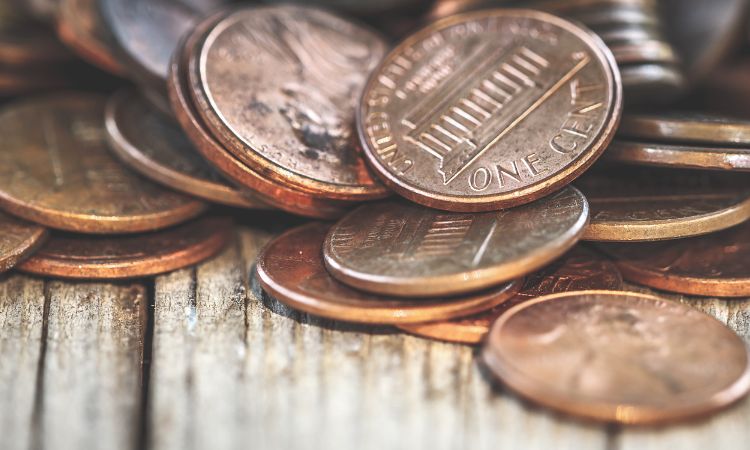All of us wish to buy a house. Most of us buy a house over a period of years by saving some money and taking a mortgage. A few others have enough money to pay for a house right away. We also have persons that can’t buy a house or won’t buy a house because they don’t have enough money to put down a 20 per cent downpayment while taking a mortgage.
Surely, you don’t wish to be short of money while buying a house. This is a situation that everyone wants to avoid. Therefore, the best thing to do is start saving for a house.
The amount of money that you start saving for a house depends on various things such as the income, size of the family and monthly budget. Obviously, this could prove hard if you’re earning a smaller salary or income. However, that’s no reason to worry. You could still save some money to arrange a downpayment for the house.
As a matter of fact, there are as many as seven steps that could help you start saving for a house. These are simple steps that anyone could take easily, regardless of their financial situation right now.
Importance of Credit Score
Getting your credit score to the highest possible level is the first and most important factor that you should consider before taking the seven steps to start saving for a house.
That’s because the mortgage amount you get and repay will depend a lot on your credit score. Sometimes, a weak credit score makes it impossible to get a mortgage. And in cases where you could, the interest rate would be very high.
Therefore, any plans to save money for buying a house should also consider these facts. It becomes much easier to buy a house when your credit score is high.
Average Homebuyer Age in the USA
In the USA, the average age of a first-time homebuyer is between 23 to 31 years. About 81 per cent of Americans buy their first home at this age.
Understandably, during the Covid-19 pandemic, the average age of first-time homebuyers increased slightly to 33 years. This means the age of 32 years to 33 years is ideal for buying your house in the USA.
The age group of 32 years to 41 years is the second highest when it comes to first time homeownership. About 48 per cent of Americans buy houses at this age.
If you’re looking for a second home or a retirement home, the average age of second-time homebuyers in the USA is about 56 years. At this age, some people sell their existing house and buy a new one in cash or take a small mortgage if needed. This is also the time when most first-time home buyers would have repaid the mortgage for their first or existing house.
Very few people buy their first house after crossing the age of 42 years. That’s because homeownership is considered as a priority in life, and Americans prefer buying one while still you are 32. This gives them enough time to repay the mortgage and start saving and planning for other things, including retirement.
Regardless of your age, how does one save to buy a house? Here’re the seven best steps to start saving for a house in 2024 and beyond.
7 Tips on How To Save For A House
Before I guide you through these seven steps, here’s something to remember. Firstly, buying a house is one of the major landmarks of anyone’s life, regardless of where they live and what they do. Secondly, property prices keep rising.
In fact, they would be going up even as you read my article. Therefore, it’s important to take these steps to start saving for your house very seriously. These are the seven steps that I suggest.
1. Plan Your Debt Repayments

Planning your debt, loan or credit repayments is perhaps the most important step you will ever take to start saving for a house. In fact, you would thank yourself for doing so. While debts or credit aren’t bad, they generally affect your credit scores. Having a loan or credit card can actually be good for building a credit score. Therefore, I wouldn’t suggest you wipe these off or cancel them altogether.
While planning your debt repayment, the first thing to consider is your student loan. According to various sources, including the Fed, a student in the USA leaves college with an average of $32,000 as debt.
Unpaid student debt can become a great hurdle for your plans to buy a house. That’s because an unpaid student loan can send your credit score into a downward tailspin.
Studies prove that an unpaid student loan can set back your life by as many as seven years, and in extreme cases, the person never recovers from its after-effects. One of the things that unpaid loans cause is delays in buying the first house. It also affects the decision to marry. Therefore, if you have a student loan, repay at the earliest.
Secondly, try to minimize your credit card dues. All credit cards come loaded with something known as Annual Purchase Rate. The longer you take to settle credit card dues, the more APR gets added to your bill. In some cases, the APR you pay is as high as 28 percent, if not more. And this APR actually eats into your earnings and reduces your capabilities to save more money.
Therefore, plan to repay all credit or loans so that you can have a higher credit score.
Also Read:
- 20 Things To Know Before Buying A House
- How Much Does it Cost to Build a House?
- Is it Better to Rent or Buy?
2. Create a House Fund

The second step to start saving for a house is to create a separate fund for the purpose. This means keeping aside a certain amount of money from your income to buy a house. The amount of money you keep aside will depend on many things. One of them is your own income and that of your spouse if you’re married. The second is the estimated price of the house that you’re planning to buy.
Consider the amount you save for buying a house as a necessary expense. That means you have to save it regardless of expenses. While this sounds easier than done, I can assure you that it’s not difficult either.
There’re several savings and investment plans that allow you to deposit a fixed amount of money each month. You could opt for direct debit and transfer from your bank for these savings and investment plans. That means, as soon as your income goes to the account, the specific amount of money is taken and invested or saved automatically for you by the bank.
When a bank debits the money for investments, you would gradually come to a stage where you wouldn’t miss the amount. You would learn to manage your expenses within whatever remains.
Ideally, you should aim to save at least 30 per cent of your income for buying a house.
3. Find a Side Income

Often, it might not be possible to save a lot of money to purchase a house. Therefore, the best thing to do is find a side income. As a matter of fact, having a side income can help you fulfil all your dreams in a much shorter time. Finding side income is not difficult. Anyone who’s working or has a business can easily do that.
The famous American billionaire Warren Buffet says that everyone should have at least seven sources of income, if not more. Unfortunately, most people in the world and in the US don’t have more than two sources of income, at most.
Obviously, it’s not possible for any human to have seven jobs at the same time unless you’re extremely rich and a board member of several companies. However, this shouldn’t stop you from having seven different sources of income as an individual.
Having a side income is one of the best steps you could take to start saving for a house. Since you’re already managing expenses and your household with the existing income, you wouldn’t really need the money from a side income for spending. This means the second income or side income can go towards saving for the house.
Again, you can save this money in a bank plan or invest it. As the money grows, you’ll be nearer to your goal of buying a house with your savings. This means you could have at least 20 per cent of the money that you need to put as a downpayment for the house before getting the mortgage.
4. Count Your Pennies

Yes, I actually mean that. This could come as a shock or surprise, but on average, Americans throw away more than $63 million worth of coins. Since they don’t want to retain coins, people throw them in trashcans, toss them at supermarket parking lots or down subway vents and all the other places one could imagine.
They do so because nobody wants the hassle of carrying coins in the purse or pocket due to their weight and, of course, the space they take. Should you be one of those persons that toss away coins, I would suggest you buy a coinbox or make one at home. Use any discarded or empty jar or other containers for collecting coins that you will get as a change after purchases.
Over a period of time, those cents and dimes, quarters and pennies, as we call them, will accumulate in the jar and other containers to give you a decent amount.
A lot of people imagine that getting notes for coins is not possible. Actually, you can trade in all the coins that you collect over a few months or a year for currency notes or even have the value credited to your debit card or bank account. Therefore, make it clear to your spouse and kids that they will not throw away any coins and instead drop them in the coinbox you make.
The only hassle that you would face is rolling these coins. All banks and credit unions will accept your coins only if you count them properly and make rolls of, say, 100 coins.
While special wrappers for rolling coins for exchange at banks are available, you could simply use a few newspaper sheets or other such wrappers. The bank that accepts your coins will pay cash in notes or credit your account. Stash away this money in your house fund.
Also Read:
5. Make Money While Sleeping

The next step that you could take is making money while you’re asleep. Surely, you would imagine that I am talking about some impossible ways to make money. Not at all. Making money while sleeping simply means having a business or project online that can earn you some money as a passive income.
There’re several passive income ideas. You could use any of these that best suits your skills and needs. For example, starting a blog with content that people would love reading is one of the best ways to have a source of passive income. The other is your own YouTube channel. Both these are online ways to make money. Usually, you can monetize the blog or YouTube channel through Google AdSense and affiliate marketing.
The other best way of making money while asleep or having a passive income is to create a course and sell it online on websites such as Udemy and Coursera, to name a few. These websites provide you with lots of free resources to create and sell a course. If you have any specific skill that could prove useful to people at their job or home, create a course and sell it.
Other ways to get a passive income include selling stock photos, having own store selling dropshipping or handmade items and buying and selling stuff. All you need is a website that advertises the stuff and lets people buy online.
If you’re good at writing, start compiling a book that people can use for work or entertainment or education. You can sell these books through Amazon Kindle Desktop publishing. On average, you can get up to $9.99 per every copy of the book you sell.
6. Save While You Shop

Savings is possible when we look for ways and means to make our Dollar stretch to the fullest. One of these ways to get more from our Dollars is to look for savings and discount offers while shopping. Maybe you’re aware that even large chains of superstores such as Walmart, Target, Kohls and others offer coupons for groceries and other stuff almost daily.
Additionally, we have websites that specially provide coupons for almost every store in the USA for shopping for anything from clothing to groceries. Websites and apps such as Rakuten and Ibotta.com help you to get cashbacks when shopping online. As though these aren’t enough, local stores also host sales and promos often.
Saving money while you shop isn’t something new. Millions of Americans do that, and hence, there’s no reason you shouldn’t be one among them. Other than festive sales, Prime Day, and Black Friday, the single-largest online retailer in the world, Amazon, also offers a lot of discounts almost daily.
If you’re alert enough, you can spot a lot of sales, and discount shopping offers every day. At the most, you would have to download their apps and look for such coupons. In fact, a lot of apps also come with coupons from their advertisers. Nowadays, you can save money on anything from entertainment to fuel with these coupons and promos.
7. Maintain Your and your Family’s Health

If you’re wondering what health has to do about steps to save for a house, I can assure you that it has a lot more than you can imagine. In 2020, Americans spent over $400 billion in pocket expenses to meet the rising costs of medical treatment. All Americans that spent this money had Medicare and other health plans. However, some of the expenses of their medical treatment weren’t covered by insurance or healthcare plans.
You can avoid paying such out-of-pocket expenses by staying fit and ensuring that your family also enjoys the best of health. It’s worth remembering that any illness and especially unexpected ones, can throw all your plans and money dreams out of gear overnight. Whatever you saved for months or even years to buy that house could be gone within a few hours.
A lot of out-of-pocket expenses on medicines and medical treatment also happen because a lot of Americans are unaware of what their health insurance plan covers and delivers. Some believe they’re too young to suffer from some chronic disease and hence, opt out of coverage for certain diseases to avoid paying higher premiums.
All these issues and out-of-pocket expenses can be avoided simply by maintaining good health and ensuring you’re aware of what the medical insurance provides.
Wrap Up
Generally, these seven steps to start saving for a house would be sufficient in the long run. In fact, you could apply these steps in all money matters of your household to save more and have a better financial future. It is very easy to spend every cent but very difficult to save anything. Therefore, I would suggest that you start using these steps now.
Samuel Mitchell is a financial analyst with expertise in investment research and risk assessment. With a background in finance and advanced certifications, he delivers accurate and concise financial analysis. Samuel’s writing style is precise and data-driven, providing actionable insights for readers. Explore the world of finance with him and make informed investment decisions.






